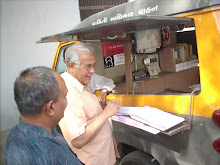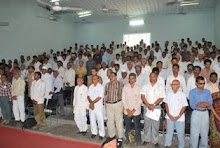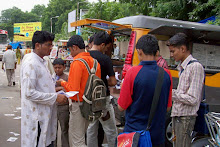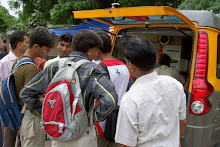Mumbai
Mirror: Mumbai: Sunday, 29 November 2015.
An RTI query
has revealed that the number of deaths due to victims falling from local trains
has gone up in the last decade. In 2005, 494 people died after falling from
local trains, and the toll this year has already reached 697 (till November
20).
The worst
year in terms of such casualties was 2013, when 901 people died after falling
from trains. It was an increase of 82% as compared to the death toll in 2005,
said RTI activist Anis Khan, quoting a reply received from Government Railway
Police (GRP).
Questions are
being raised about the commuters' safety, the local trains' capacity, and the
railways' ability to respond quickly to an emergency, after a 21-year-old
Dombivili resident fell off a crowded CST-bound local during the peak hours on
Friday, resulting in his death.
The pictures
above are grabs of a video recorded by another commuter in the second class
compartment, in which the victim, Bhavesh Nakate, was desperately trying to get
a foothold.
Khan said
that the railway administration has failed to provide a safe and comfortable
journey to the people. Most passengers who fall or slip from the running trains
are struggling to get inside the compartment, just like Nakate. "The
victims lose their grip and fall off, or get dashed against a pole near the
railway track," Khan said.
As per the
statistics provided under the RTI query, 7,686 people died after falling off
trains in the last 10 years, while more than 22,000 were killed while crossing
the tracks.
Activists
said that the suburban railway network was on the "verge of a
collapse". Transport expert Ketan Goradia said, "A local train's
capacity is around 1,700 people, and during the rush hours, it carries around
5,000 commuters. You can imagine the plight of the commuters. It's a miracle
that people don't die of suffocation inside the compartments."
A senior
Western Railway official said that the railways were doing "everything
possible" to provide a comfortable transport, but "beating the
population explosion was beyond anyone's control". "If you compare
the Mumbai suburban train network with its counterparts across the world,
you'll see that we cater to the most number of people," the official said.
The commuters
and experts, however, said that the railways could have done a lot more.
"The system needs an overhaul. Signalling, station and platform layouts,
track maintenance, converting all 12-coach trains into 15-coach trains...
obviously, the railways have a lot of work to do," said PC Sahagal, former
MD of the Mumbai Rail Vikas Nigam.














































































